|
Ask anyone what the worse bit of their run is and chances are they will say the first 10 minutes or so. We all know it. That feeling of having your worst enemy on your shoulder, cruelly whispering ‘you can’t do this’: your breathing is all over the place and you wonder if indeed you did lace into concrete shoes instead of trainers. Whilst we might not get as far as loving it, there are lots of things we can do to make it better. Why does it happen: Basically, all those physical and mental responses we get early on in any run, are our body’s way of saying, ‘what the hell are you asking me to do! You have got to be joking! when you ask it to go from ‘I’m very happy just existing’ to running. To use the analogy of the car, you are asking your body to go from cold start, it’s not been used for a while, to 5th gear and speeding along the motorway without making any gear changes. A little bit of very simplified background…. (feel free to skip this and go straight to ‘what to do’) Our bodies are fuelled by various different energy systems, some which require oxygen (aerobic) and others that don’t (anaerobic) and whilst they operate in parallel, each is suited to a particular intensity of effort. At the very top of the spectrum is the ‘Usain Bolt’ intensity, fuelled by a system which only lasts for around 10 seconds. It is no coincidence that the 100 m record is around this time. When it runs out, sprinters are relying on slowing down the least, rather than running faster. Very few of us will ever take part in a 100m sprint but this same energy system is present when we set off on those first few steps of a run, in fact when we go from resting to any activity. When this ‘B of the Bang’ source diminishes we switch to an energy system which uses stored glucose/glycogen but still doesn’t need oxygen and lasts for around 60 – 120 seconds. A by product of this is lactic acid: the stuff which makes our legs feel heavy, gives us shortness of breath (recognise any of these?). Beyond this we are left with the work horse, the aerobic energy system, which uses oxygen, carbohydrates, fats and proteins to create energy and if nurtured can go on indefinitely. So when we set off on that run our bodies use up the first 2 sources of energy in the first few minutes and then are left rapidly adjusting to use the 3rd. Pretty clever really. What we need to do is learn how to ease the transition. What can you do to make it better WARM UP Getting your body and head ready for running is not a bolt on, nice to have. It does what it says on the tin and gets our heart, muscles and lungs ready and prepped for running. Going back to the energy systems, warming up means we have already acclimatised the body to needing more oxygen and so it doesn’t spend the first few minutes bringing in huge lungs fulls and feeling generally pants. The warmer your joints and muscles are before your start the less effort and therefore the less energy, oxygen they need when you get going running. A warm up needs to be dynamic, full of movement and match the sort of exercise you are planning. A slow steady run equals a steady warm up whereas fast running needs some spurts of faster running in the warm up. Static stretching before a run is counter-productive as it makes muscles lengthen and not primed to run. A warm up also needs to be appropriate to you and the conditions. Some people take longer to warm up than others and you almost certainly need a longer warm up in colder weather. Warming up is turning on the engine and going through the gears. 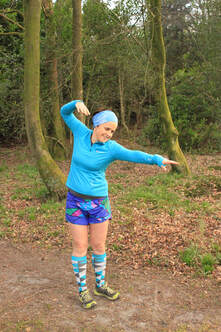 Examples of warm ups: (min 5 mins) - Brisk walk
Try different things and see what works for you. Many of us can feel a bit self conscious doing a warm up before a run and so use walking briskly away from people as part of it and then add in more. You need to be noticing your breathing and heart rate rise for it be an effective. Not only do these things get you ready to run, they also are a simple way of adding in strength, mobility, balance work which will help your running long term. PS you are less likely to get a stitch too. START OFF SLOW Even with a good warm up it pays to start off at a slower pace and work up to the effort you want to be putting in for the majority of the run. And I use the term ‘effort’ deliberately, as using the less techy RPE (Rate of Perceived Effort) to gauge your run is far more effective and easier than heart rate or pace. Aim for a ‘chatty’ kind of running: you can pretty much hold a conversation rather than feeling really out of breath. If 1 is sitting down watching TV and 10 is maximum effort, you feel sick, then aim for around 4-6. Even though it may feel super slow, this level of effort produces the best results in terms of your overall fitness. You will speed up as you get fitter but your effort levels will feel the same. It is very common for runners and in particular new runners to start off too fast and then come unstuck.
BREATHE Sounds obvious but take notice of your breathing. If it is short and shallow, try and focus on a calm, controlled out breathe and the in will follow. The more oxygen you take in the quicker the energy systems adapt. If after a few minutes you can't get it under control, then you are going too fast, slow down.
You can do all these things but there will be times when the first 10 minutes really suck and so there is something about training your brain to tough it out and ignore the 'Stop!' voice in your head. Telling yourself that you know what is going on and that it will get better is a simple but useful technique. Kind of a, 'I have been here before and I have overcome it' type conversation with yourself. But equally importantly is listening to your body, stopping running and saving it for another day. So whilst you may never learn to love the first 10 minutes, there is plenty you can do to make the most of them.
3 Comments
Winter has waved it's magic or shall I say mud and the trails are providing some great adventures in puddle jumping, mornings blanketed with low fog and fresh fresh air in abundance. And I have even been seen out in trousers! Whilst many of us reach for the duvet, winter is a great time to get out running whether it be for the first time ever or as part of your regular training plan. Time spent running at a 'chatty' pace is a good way of building a strong foundation for the months and events ahead. I am adding a lot more guided runs for 2020 and so read on to find out more.
Monthly Night Runs take place on a Tuesday each month (except August) at 7:30pm. Watch the seasons and the light change over the year. If you would like to improve your trail running technique, learn how to tackle those hills and practise your running efficiency, come along to this half day session, Sunday 9th Feb - 12:30 - 16:30. Includes technique sessions, a social run and plenty of tea and cake. If you needed an excuse to meet up with others, clear your head, breathe in fresh air and appreciate the beautiful outdoors this is it. Weekly Thursday runs from different start points around the Surrey Hills - Holmbury, Leith, Pitch, Abinger, St Marthas. Guided group run. Sunday Socials runs will take place every Sunday at 8am from different locations across the Surrey Hills (Holmbury, Peaslake, Ranmore, St Marthas, Leith and more). Generally short (1 hour) and sometimes long (2 hours). Guided group run. There is no such thing as bad weather.... It's very easy to look out of the window at the driving rain or frosty grass and put off that run for another day. Yet, I don't know anyone who has come back from a wet and windy run and not felt epic. So get the right kit and be bold in the cold. Run Surrey Hills supported Anna McNuff to run barefoot across Britain Yes that's right. Barefoot. Anna did and I didn't! Needing a guide to navigate the Surrey Hills, I helped Anna find her way from Dorking to Kingston. Turns out there is definitely a hierarchy of preference when it comes to running barefoot. Stones (much of the Downs - eek) bad, grass ok, mud great, tarmac fabulous ! Take a look at the photo to see how much I was enjoying the latter! Use code WERUNTRAIL for FREE tickets to The National Running Show 25th & 26th Jan 2020. If you love trail and I know you do! I will be hosting the Trail Zone at the National Running Show 2020 as part of the trail community I founded, We Run Trail. We have a whole host of things to do including some great Trail Chats from Emma Gould, GB Mountain Runner, Chris Nicholson, wheelchair trail racer and Claire Maxted of Wild Ginger Running and more. Come along, talk all things trail and catch up with friends. Get in touch if you could VOLUNTEER to be on the trail zone and share your trail enthusiasm. k runs If you have a trail running adventure or goal in mind or indeed you fancy joining me in wearing a wetsuit in the woods get in touch for a chat : )  Motivation can be a fickle thing. Just when you think you have become firm friends; you have introduced it to your family, shared your last chocolate with it, ‘poof’, up it goes and vanishes and you are left wondering what you did wrong. When the nights are long, the days cold and the reality of getting out to exercise hits, that New Year’s resolution to run a marathon (add in your own crazy goal here) can feel as realistic as a trip to the moon. So if your ‘mojo’ has gone walk here’s how to bring it to heel again. Imagine eating an elephant in one go! Crazy but that’s what many of us do. We fixate on the end; the big, all singing, all dancing, glorious goal. If you want to have a better chance of staying on track and motivated, break your challenge down into bitesize chunks for each day, week, month. For example, if you are solely focused on running 26.2 miles, there is a chance you may overlook food, kit, strength, mental preparation which are just as important. Not only does breaking down your goal mean you are less likely to choke it means your plan can be a lot more agile too - you can notice if you are smashing it or not and make changes. Be realistic. I love a goal that makes you squirm but if a plan means training 12 hours a week when there is no way you make that time around family, work commitments then you are heading for disappointment. Don’t give up, just change how you get there. The more personal a training plan the more you feel you own it and the more motivated you are. Celebrate success. Every time you meet a goal no matter how simple it is, bottle that success and save it for a rainy day. When your motivation is waning, take a sniff and remind yourself what you have achieved and that you can do it. See the bigger picture. I often see people whose response to falling motivation is to push themselves harder to do more with the result that they get more tired, less inspired and on. Stop and look up. A drop in energy is often our body’s way of signalling time out, a change is needed. Are we getting enough sleep, food, recovery, variety and do we still buy in to the original goal? Seek out people who make you feel good about yourself and encourage you in your goals - maybe friends or a coach. Ignore the people who say you can’t do it. It is easy to mock. It takes courage to do something that slightly scares you. Likewise become a supporter of others. Positivity breeds positivity breeds success. Feed your mojo! Whilst we humans love a routine we thrive on variety and fun. It makes our brains happier and therefore more motivated. Make times for when you can explore different areas, meet friends and exercise, try new sports or simply be spontaneous. Reign it in! Often our motivation at the start is like a new puppy wanting to hurtle on at full speed, ears flapping wildly only to have to flop on to the sofa exhausted. Remember it is a long game you are playing and so keep some of your enthusiasm in the tank for when you need it. So whether your mojo is straining at it’s lead or sulking behind a bush, take time to get to know what makes it tick and you will be well on your way to crossing that line. Christmas conjures up all sorts of delicious smells for me; roast potatoes crisping in the oven, that strangely appealing odour of crackers just pulled, the sweet smell of warm mince pies and even the slightly dubious ones (Granny!). But my favourite by miles, is the smell of salty, hot bacon wafting through cold fresh air as my husband and I reach the top of Leith Hill, the high point of our Christmas Day run. Add in the eye expanding view over the beautiful Surrey and Sussex countryside and there is no better place to be.
Escaping the chaos of our packed household on Christmas Day is a custom I have long bought into. Quite frankly all the fuss surrounding what is essentially in my mind an oversized roast dinner and the often conflicting ‘traditions’ imposed by visiting relatives can get all too much. Putting on my familiar running gear and if I’m lucky a new pair of Christmas socks and heading out that door whatever the weather, is my time. The best present I can give to myself (and I didn’t have to wrap it). My family have long accepted that this isn’t some sort of selfish lunacy (sometimes it is) but that it’s a drug free form of medication. I love leaving the warmth of the house and feeling my body adjust to the change in temperature and I love the fact that with a house full of people, these 60 minutes or so may be the only time my husband and I get to chat freely without the demands for batteries, hot water or frowns from parents in law about why our children are still in their pyjamas. Inevitably we bump into friends and exchange christmas wishes, laugh at our respective dogs playing chase and because we are British, comment on the weather. And it is that simplicity and giving my girls big hugs with cold hands on our return that makes my day. And that smell of bacon? - well that is a tradition I am aspiring to and so come this Christmas, I will be heading out with my tiny MSR pocket rocket stove and a packet of bacon in my pack. So if you are out in the Surrey Hills and smell a hint of bacon on the wind, you know where to find us. We will pack extra. Happy Holidays Jude
|
AuthorAll round lover of wild running and wild swimming. UK Athletics Fell/Trail Running Coach, SwimRun Coach and Personal Trainer in the Surrey Hills Archives
June 2020
Categories |
Proudly powered by Weebly







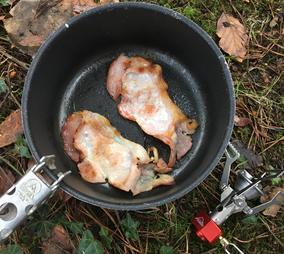
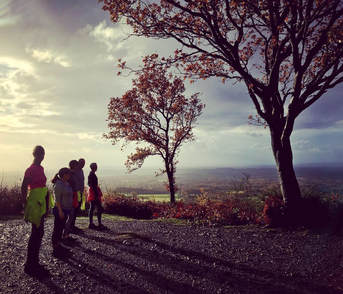


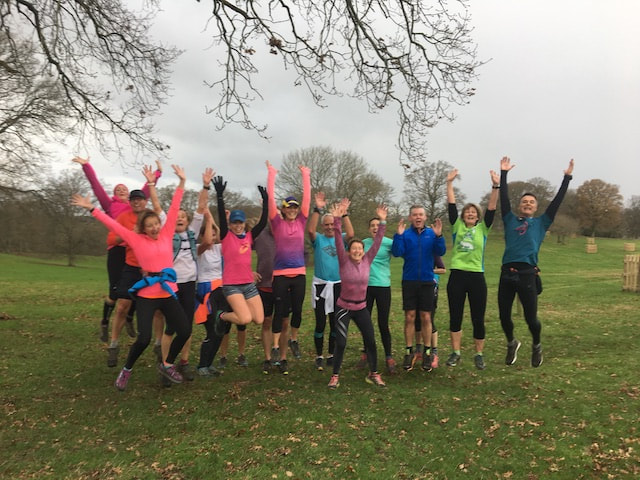

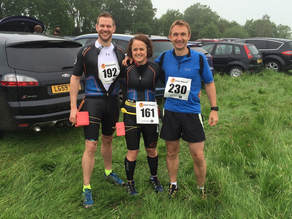



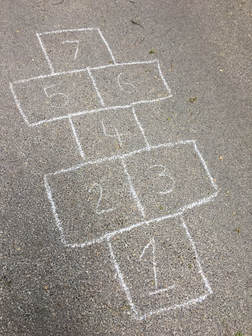




 RSS Feed
RSS Feed